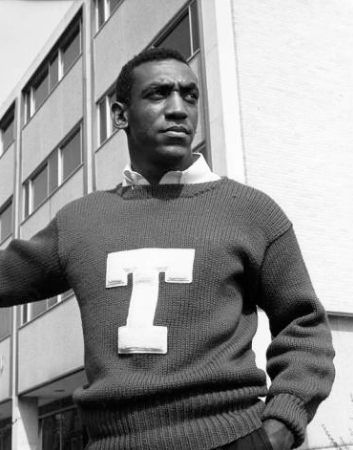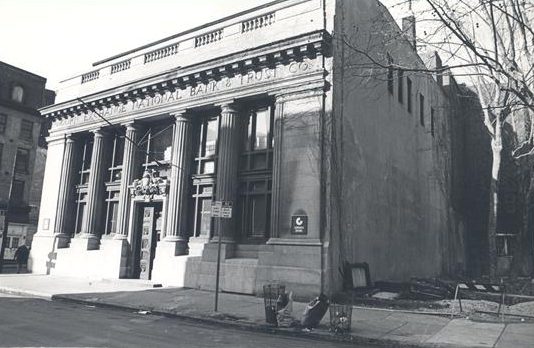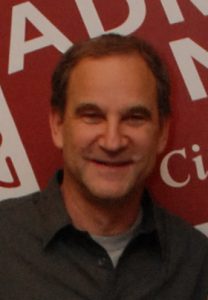Television Shows (About Philadelphia)
Essay
The Philadelphia region has provided a backdrop for numerous television programs, including shows by creators from the region. Although the programs often were shot in other places, like New York or Los Angeles, the Philadelphia setting provided important references and details. In some cases, stories called for posh suburbs, such as those on the Main Line. In other situations, the central city served as a gritty urban setting. The depictions were not always positive, but they created an image of southeastern Pennsylvania that reached viewers across the country.

In the early days of television, most shows were set in New York City, home to the television industry until production migrated to Los Angeles in the mid-1960s. It took some time for shows to be set outside New York. One of the first national programs to be broadcast from Philadelphia, American Bandstand (WFIL, 1952-57; ABC, 1957-87; USA, 1989), started as a local program in 1952 and went national in 1957. The legacy of American Bandstand continued with the 2002 drama American Dreams (NBC, 2002-5), which examined life in Philadelphia in the early 1960s.
Philadelphia’s suburbs became a favorite setting for the intrigue and scandal of daytime soap operas. The Main Line west of Philadelphia had established a reputation as a place of wealth, especially in the wake of The Philadelphia Story, the 1939 play that became a 1940 film and the 1956 movie musical High Society starring Philadelphia’s Grace Kelly (1929-82). In combination with the nearby city, suburban neighborhoods also provided a setting of socioeconomic diversity. Two long-running soap operas, All My Children (ABC, 1970-2011) and One Life to Live (ABC, 1968-2013), both operated in the same soap opera universe but took place in different suburbs. All My Children was set in the fictional suburb of “Pine Valley,” modeled on Rosemont on the Main Line. One Life to Live’s fictional “Llanview,” a nod to the area’s Welsh background, took its inspiration from Chestnut Hill in Northwest Philadelphia. The creator of both shows, Agnes Nixon (1922-2016), a longtime resident of the Main Line, grew up in Tennessee and provided her shows with an outsider’s view of a world she came to know well. Nixon created a world that illustrated the socioeconomic diversity of the area and did not seek to whitewash her setting.
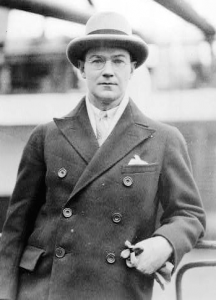
The 1980s renaissance of television drama found Philadelphia and its suburbs in the spotlight again, primarily with thirtysomething (ABC, 1987-91). This program followed a group of friends through the stresses of children, career, and marriage. As part of the “prestige drama” trend in the 1980s, the show had a relatively small audience, but those viewers gained a new perspective of Philadelphia. Co-creator Marshall Herskovitz (b. 1952) was a Philadelphia native, and his characters had careers at City Hall and attended school at places like the University of Pennsylvania and Princeton. The show depicted Philadelphia as a city with a vibrant and educated creative upper-middle class through characters who worked in a fictional Philadelphia advertising agency. Through the death of a main character in a car crash, thirtysomething also reinforced the notion that the Schuylkill Expressway was a dangerous place to drive.
Family Sitcoms
During the 1990s, Philadelphia and its suburbs also served as settings for family sitcoms. Boy Meets World (ABC, 1993-2000) made references to Philadelphia sports teams, landmarks, and universities, although the city remained largely unseen and unimportant to the action. In contrast, The Goldbergs (ABC, debuted 2013) relied on its setting of Jenkintown and its proximity to the city to tell its stories. In addition to the family’s love for the Philadelphia Flyers and Phillies, the show represented the city’s Jewish population. Based on the childhood of the creator, Jenkintown native Adam F. Goldberg (b. 1976), the stories required specific local institutions and landmarks, such as Veterans Stadium and the Spectrum.
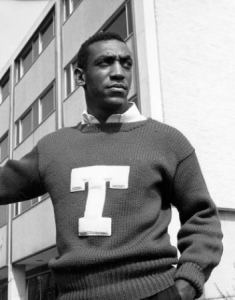
Philadelphia-centered programs increasingly depicted a broader spectrum of race and class. In 1972, Bill Cosby (b. 1937) created the cartoon Fat Albert and the Cosby Kids (CBS, 1972-85), which took place in the projects of North Philadelphia, a world away from the Main Line in the era after the “white flight” of the 1960s and 1970s. In the 1990s, The Fresh Prince of Bel-Air (NBC, 1990-96) confronted juxtapositions of class and race head-on as its main character, an African American teenager played by Philadelphia-born Will Smith (b. 1968), went to live with family in the wealthy Los Angeles suburb of Bel-Air. The show’s catchy opening theme song (“In West Philadelphia born and raised…”) established a close association with Philadelphia. In the wake of the 1992 Los Angeles riots, the show confronted issues of race in major cities in the early 1990s.
The city’s gritty reputation from the 1970s and 1980s contributed to making it a backdrop for crime procedurals and dramas in the twenty-first century. Hack (CBS, 2002-04) shot primarily on location in Philadelphia, but others including Body of Proof (ABC, 2011-13), and Cold Case (CBS, 2003-10) filmed elsewhere and used the city as a setting perceived to have a high crime rate. How to Get Away with Murder (ABC, debuted 2014) used University City as its setting, creating the fictional Middleton University out of Philadelphia’s many elite schools. The show also featured a diverse cast, reflecting the heterogeneous professional class in Philadelphia.
It’s Always Sunny . . .
Philadelphia natives who became show creators found success in highlighting their hometowns, even if the depiction was not always kind. The creator of It’s Always Sunny in Philadelphia (FX / FXX, debuted 2005), Rob McElhenney (b. 1977), was born and raised in Philadelphia, attending St. Joseph’s Preparatory School. The show often referred to major landmarks and institutions, such as the University of Pennsylvania and South Street. The writers also included smaller local references such as La Salle University and the Philadelphia Inquirer and required its viewers to know something about the city to get some of the jokes involving these regional touchstones. However, the show tended to depict the city as dirty and populated by shifty, undereducated eccentrics. Crude, unsympathetic main characters found themselves in very unfortunate predicaments. This vision of Philadelphia was played to comic effect, however, and McElhenney’s charity work and restaurants in the city demonstrated his deep affection for his hometown.
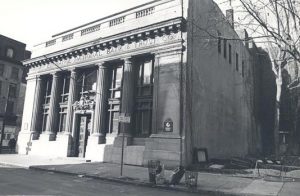
The proliferation of reality programming starting in the early 2000s also placed Philadelphia at center stage, albeit in an extensively edited way. The Real World (MTV, debuted 1992), which cast diverse twenty-somethings to live and work together for a period of time, set up in a former bank building at Third and Arch Streets in 2004. As cameras recorded typical young adult angst and problems in the house, The Real World: Philadelphia cast worked for the Philadelphia Soul arena football team and performed charity work for the Northern Home for Children. As with many of the Real World casts, controversy followed throughout the show’s filming, and an altercation between a Philadelphia police officer providing security and some off-duty officers cast the city in a negative light. Parking Wars (A&E, 2008-12) followed the Philadelphia Parking Authority (PPA) on its daily rounds as officers wrote tickets, booted vehicles, and dealt with angry drivers. While the show also filmed in Providence, Rhode Island, and Detroit, Michigan, Philadelphia became the city most commonly associated with the program. Cops (Fox / Spike, debuted 1989) and The First 48 (A&E, debuted 2004) also shot episodes in Philadelphia.
The region’s diverse depictions on television often created realistic representations of the physical city and reflected dominant characteristics of its people, but some programs also reinforced problematic stereotypes. Often with guidance from creators with local ties, Philadelphia became, in effect, another character on the shows set in the city and its suburbs. These settings became, in turn, an attraction for fans seeking to visit sites and neighborhoods from their favorite programs, leading to increased tourism and demonstrating the impact of Philadelphia’s longstanding and continuing presence on television.
Megan C. McGee Yinger earned her Ph.D. in American Studies from Penn State University-Harrisburg. She is working on a project that explores how American media prepare for and cope with natural and man-made disasters. (Author information current at time of publication.)
Copyright 2017, Rutgers University
Gallery
Backgrounders
Links
- Broadcast Pioneers
- On Televsion: Bar None: "It's Always Sunny in Philadelphia" and "The Mindy Project (New Yorker, November 11, 2013)
- Drunk fights, hostile crowds and loving the Gayborhood: Secrets of ‘The Real World: Philadelphia,’ 10 years later (Billy Penn, May 5, 2015)
- ‘Thirtysomething’ killed off Gary 25 years ago. Now TV characters drop dead all the time. (Washington Post, February 10, 2016)


